题解 | #矩阵乘法计算量估算#
矩阵乘法计算量估算
http://www.nowcoder.com/practice/15e41630514445719a942e004edc0a5b
题目描述
首先给定了我们一个矩阵的个数n,然后接下来就是给我们n个矩阵,对于我们的每一个矩阵会给我们一个行数和列数,然后我们再给我们一个矩阵的运算法则,我们就是可以进行计算,我们对于矩阵的计算是这样解释的
我们矩阵的运算次数等于我们,然后我们的新的矩阵的行和列分别就是和,然后要记住的就是我们的矩阵是没有交换律的
题解
解法一:栈
实现思路
我们可以考虑这么一个问题,我们先把我们的矩阵存储下来,然后我们可以每次遇到左括号什么也不考虑,如果我们遇到了右括号我们就把栈里面的两个矩阵出栈,我们对这两个矩阵计算一下计算的次数,然后我们再构建出来我们的新的矩阵,放入我们的栈中,以此类推我们最后就可以得到我们的结果
图解代码
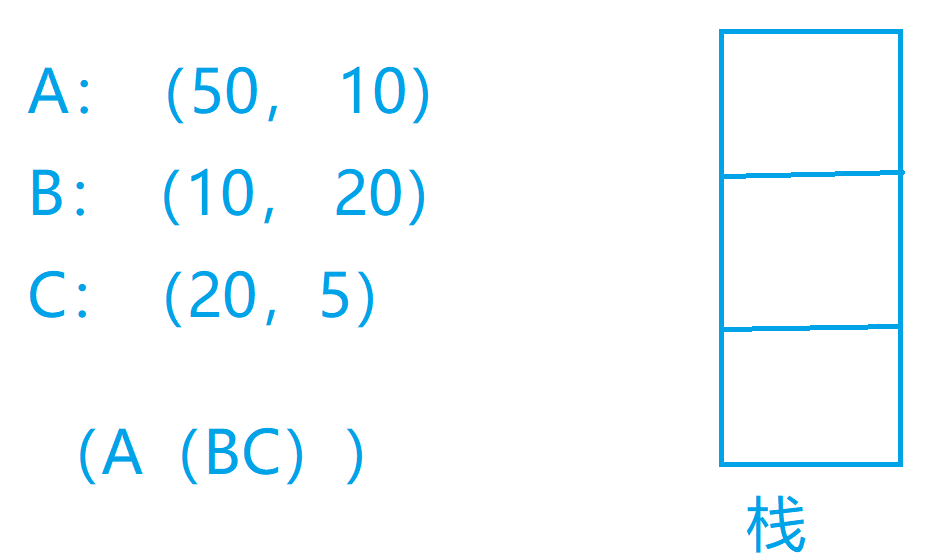
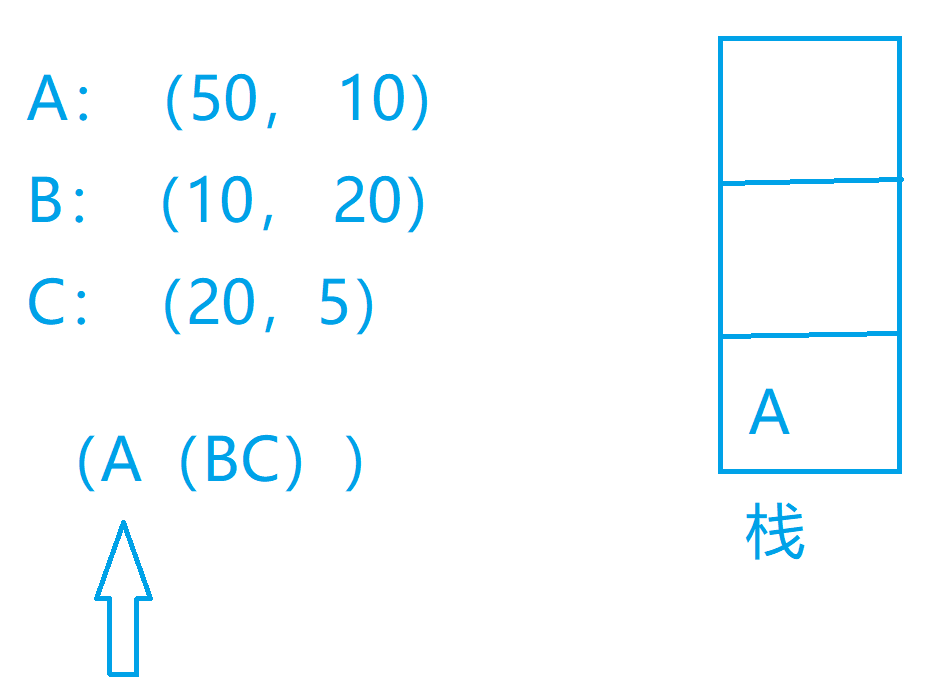
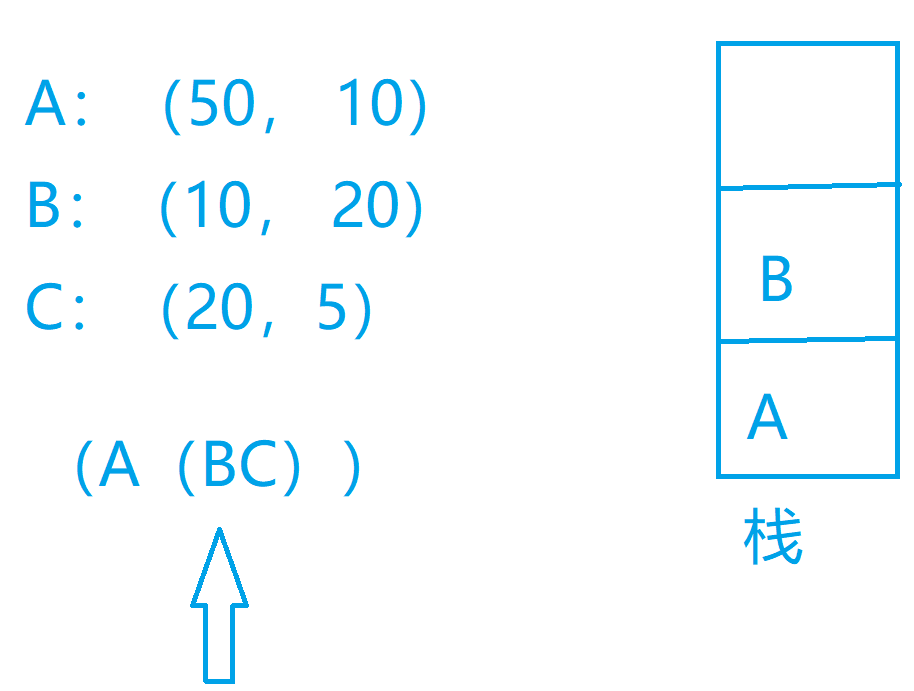
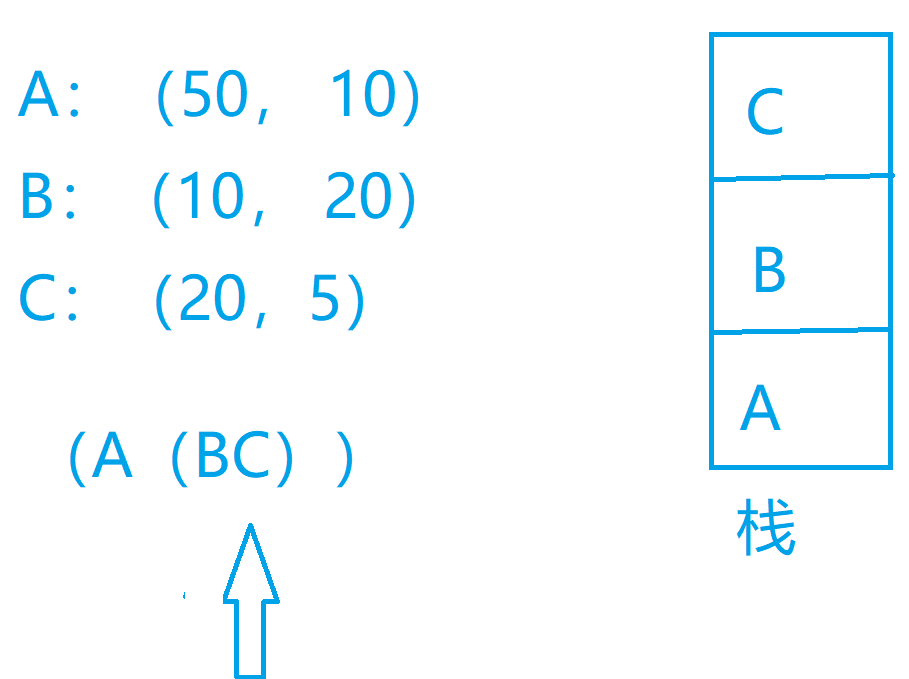
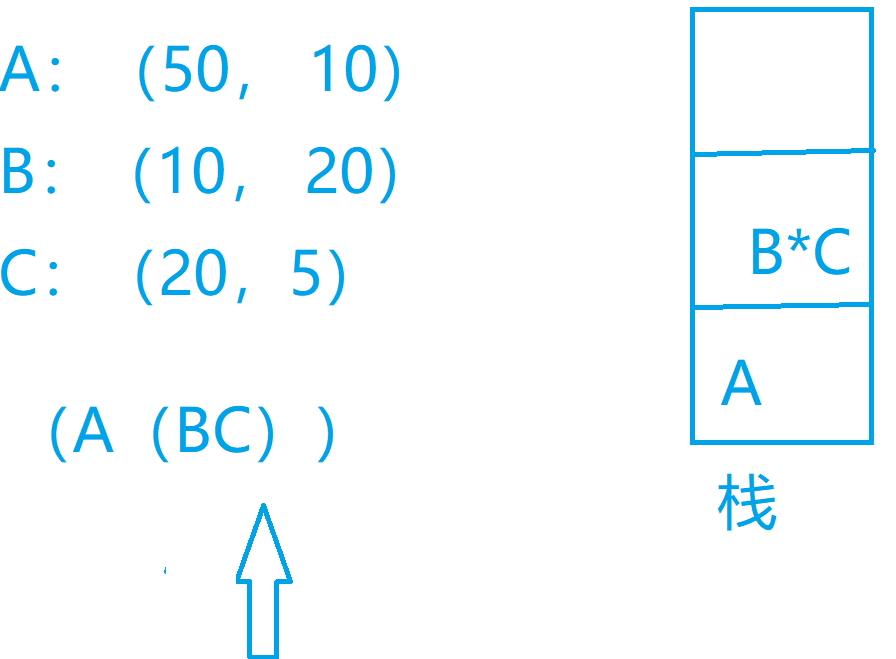
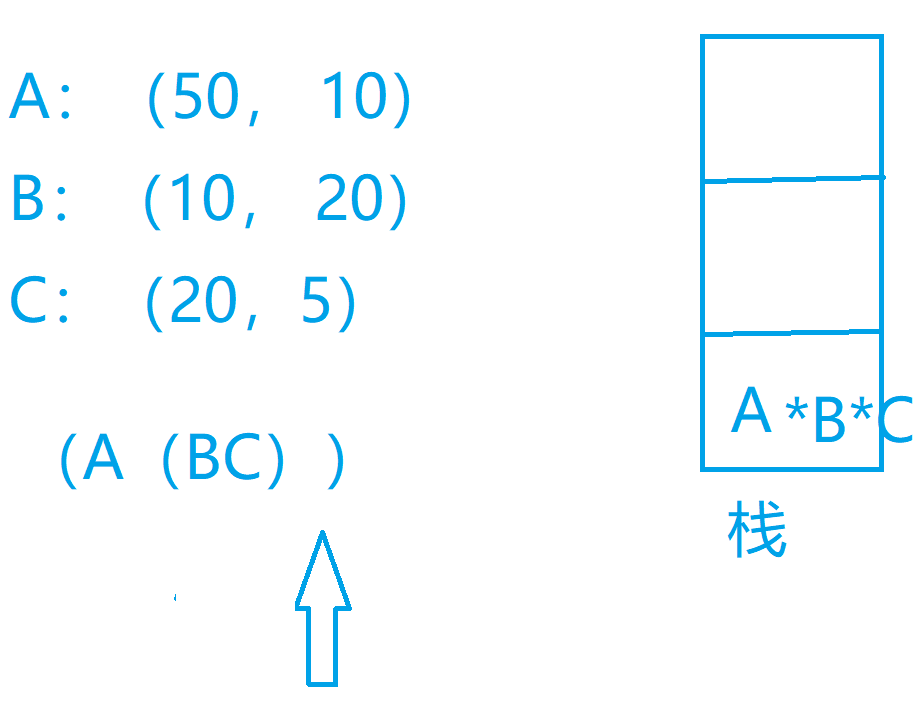
代码实现
#include <bits/stdc++.h>
using namespace std;
signed main() {
int n;
cin >> n;
vector<pair<int, int>> martix(n);
// 这个是存储我们的矩阵的开始顺序
for (auto &[u, v] : martix) cin >> u >> v;
// 这个是输入我们的n个矩阵
string str;
cin >> str;
// 这个是我们的一个运算的法则
reverse(martix.begin(), martix.end());
// 我们为了让我们后续方便操作
stack<pair<int, int>> st;
int res = 0;
// 我们的运算次数
for (auto &it : str) {
if (it == '(')
continue;
else if (it == ')') {
// 如果我们当前是右括号,我们出栈两个矩阵运算
if (st.size() <= 1) break;
auto b = st.top();
st.pop();
auto a = st.top();
st.pop();
// 弹出两个矩阵,然后我们得到一个新的矩阵放入我们的栈种
auto c = make_pair(a.first, b.second);
st.emplace(c);
// 并且计算当前的值是多少
res += a.first * a.second * b.second;
} else {
// 对于我们其他的次序到了矩阵的时候,我们要入栈
st.emplace(martix.back());
martix.pop_back();
}
}
cout << res << "\n";
return 0;
}
时空复杂度分析
时间复杂度:
理由如下:事实上我们就是遍历了一次我们的整个运算的规则而已
空间复杂度:
理由如下:我们事实上只需要考虑这样一个问题,最坏情况下我们的栈里面要保存下来我们所有的矩阵,所以我们的空间复杂度是的
解法二:矩阵类
实现思路
事实上,我们可以发现这么一件事情,我们需要抽象出来这样的一个矩阵的类,我们用于干嘛呢,我们需要用这个矩阵的类来实现我们的乘法操作,这样让我们返回一个我们新的构建出来的一个矩阵,然后我们定义一个方法来实现我们计算的次数,这样有了C++的类的思想,面向对象的思路变成
代码实现
#include <bits/stdc++.h>
using namespace std;
class Martix {
protected:
int x, y;
public:
Martix() {}
Martix(int x_, int y_) : x(x_), y(y_) {}
int getX() { return this->x; }
int getY() { return this->y; }
void setX(int x) { this->x = x; }
void setY(int y) { this->y = y; }
int getCount(const Martix &wb) { return this->x * this->y * wb.y; }
friend Martix operator*(const Martix &wa, const Martix &wb);
};
Martix operator*(const Martix &wa, const Martix &wb) {
Martix martix(wa.x, wb.y);
return martix;
}
signed main() {
int n;
cin >> n;
vector<Martix> martix(n);
for (int i = 0; i < n; i++) {
int x, y;
cin >> x >> y;
martix[i].setX(x), martix[i].setY(y);
}
reverse(martix.begin(), martix.end());
// 这个是构建我们的矩阵数组,并且把我们的数组放入元素
string str;
cin >> str;
// 我们的运算规则
stack<Martix> st;
int res = 0;
// 我们的运算次数
for (auto &it : str) {
if (it == '(')
continue;
else if (it == ')') {
// 如果我们当前是右括号,我们出栈两个矩阵运算
if (st.size() <= 1) break;
auto b = st.top();
st.pop();
auto a = st.top();
st.pop();
// 弹出两个矩阵,然后我们得到一个新的矩阵放入我们的栈种
auto c = a * b;
st.push(c);
// 并且计算当前的值是多少
res += a.getCount(b);
} else {
// 对于我们其他的次序到了矩阵的时候,我们要入栈
st.push(martix.back());
martix.pop_back();
}
}
cout << res << "\n";
return 0;
}
时空复杂度分析
时间复杂度:
理由如下:事实上我们就是遍历了一次我们的整个运算的规则而已
空间复杂度:
理由如下:我们事实上只需要考虑这样一个问题,最坏情况下我们的栈里面要保存下来我们所有的矩阵,所以我们的空间复杂度是的
机试题目题解 文章被收录于专栏
主要是机试题目的题目讲解和做法


